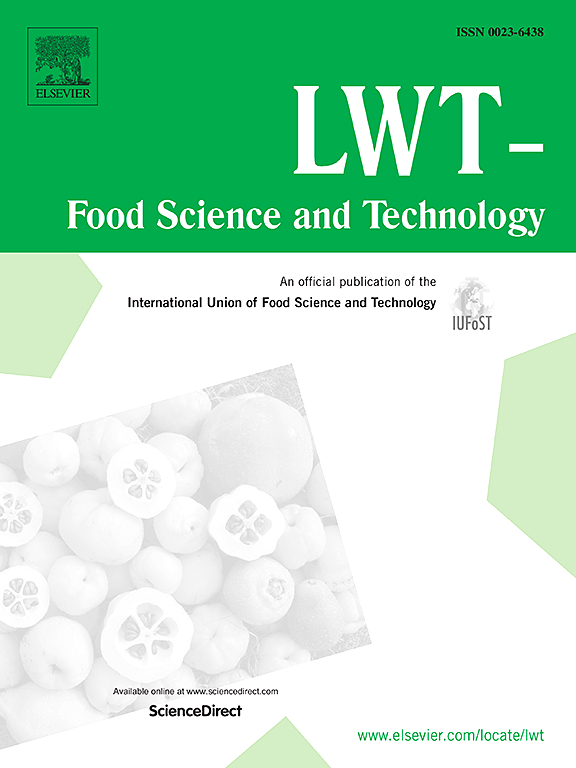The effect of 1-methylcyclopropene on the shelf life of sand pear fruits
IF 6
1区 农林科学
Q1 FOOD SCIENCE & TECHNOLOGY
引用次数: 0
Abstract
Early senescence significantly affects the post-harvest quality of sand pear fruit, making it crucial to find methods for delaying senescence and extending shelf life. Here, the effect of 1-methylcyclopropene (1-MCP) at concentrations of 0.5, 1.0, and 1.5 μL L−1 on the regulation of postharvest fruit quality and shelf life in sand pear stored at room temperature was investigated. The results showed that treatment with 1.0 μL L−1 1-MCP effectively delayed senescence in sand pear by reducing respiration rate, weight loss, and maintaining higher firmness during shelf life at room temperature. Additionally, 1-MCP treatment decreased ethylene production, abscisic acid and jasmonic acid contents, while increasing salicylic acid, auxin, melatonin, and antioxidant capacity by regulating their corresponding genes. 1-MCP treatment also slow down fruit softening by suppressing polygalacturonase, pectin methyl esterase, and cellulase activities and by regulating fruit softening genes. Pearson's correlation analysis revealed strong relationships among these senescence-related indicators. Notably, a concentration of 1.0 μL L−1 1-MCP was the most effective in delaying sand pear fruit senescence. Our findings could ultimately pave the way for more precise and targeted approaches to prolong the shelf life of sand pear and potentially other fruits, reducing postharvest losses and enhancing food security.
求助全文
约1分钟内获得全文
求助全文
来源期刊

LWT - Food Science and Technology
工程技术-食品科技
CiteScore
11.80
自引率
6.70%
发文量
1724
审稿时长
65 days
期刊介绍:
LWT - Food Science and Technology is an international journal that publishes innovative papers in the fields of food chemistry, biochemistry, microbiology, technology and nutrition. The work described should be innovative either in the approach or in the methods used. The significance of the results either for the science community or for the food industry must also be specified. Contributions written in English are welcomed in the form of review articles, short reviews, research papers, and research notes. Papers featuring animal trials and cell cultures are outside the scope of the journal and will not be considered for publication.
 求助内容:
求助内容: 应助结果提醒方式:
应助结果提醒方式:


